By the end of my week in the Bulgarian capital of Sofia I was still suffering from the effects of eating tainted food in a restaurant in Brasov, Romania. I couldn’t seem to shake the the upset stomach and general malaise that had sapped my energy. Just the idea of returning to fast travel mode made me tired, so I decided to forego seeing the cities of Plovdiv and Veliko Tarnovo. Sad as that decision was, I had to make health my first priority. Instead, I began looking for an affordable destination in Bulgaria where I could do a one week yoga retreat, take long walks on the beach, eat healthy food, and recover my stamina. A bit of Internet research led me to Sarah Astbury, a British yogi who offered Yoga, meditation classes, and massage services in Sozopol Bulgaria. A phone call later, I’d not only booked a week of Yoga, but Sarah had arranged for me to stay with the Atanasova family in the historic old town area of this small fishing village on the shores of the Black Sea.
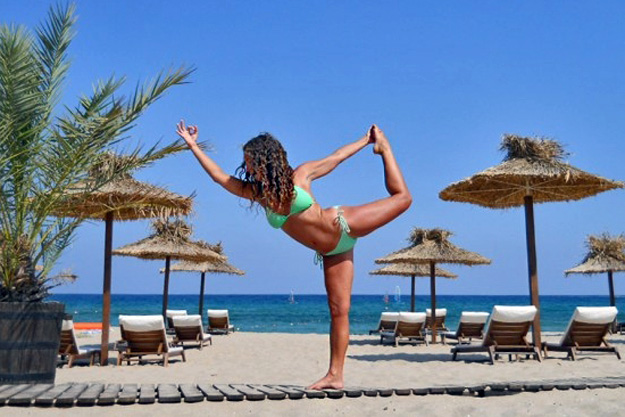
And so began my week of recuperation. Each morning I meditated in my room for half an hour, then walked the block to Sarah’s studio for a 1.5 hour restorative Yoga class. Afterward, Sarah made me a big brunch of my choice; sometimes I opted for fresh fruit topped with mouth-watering homemade Bulgarian yogurt, other days I craved fluffy three-egg omelets. When I couldn’t eat another bite I burned off those calories with long afternoon walks, during which I discovered Sozopol’s fascinating history.
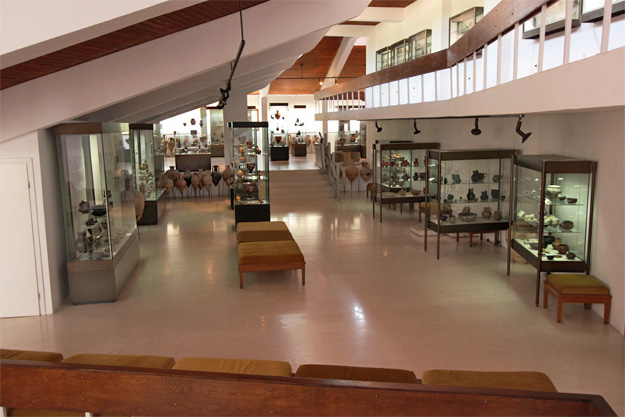
At the Archeological Museum I learned that about 1,000 Greeks from Asia Minor settled in the area now known as Sozopol in the year 611 B.C., probably after reaching an accord with the members of the Thracian tribe of Skyrmianoi, who had occupied the peninsula for more than 500 years. Jointly, they founded the independent city-state of Apollonia, named for the Greek god Apollo. The native Thracians and Greeks lived together peaceably, merging their cultural and spiritual beliefs. Greeks erected a 40-foot high bronze sculpture of Apollo that was hailed as one of the seven wonders of the ancient world and built temples dedicated to Dionysos, Poseidon, Aphrodite, and Hecate, while Thracians raised statues honoring their famous horsemen. Evidence of the merged cultures can be clearly seen on ancient vessels displayed in the museum. The delicate orange on black urns display scenes of Dionysos, the Greek god of wine and good times, as well as patterns reflecting ideas of death, living in the afterlife, and god granting immortality according to the Thracian religion.
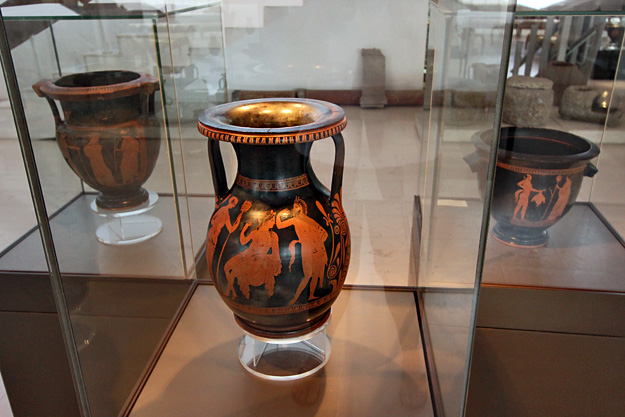
Archeological evidence indicates that by the 4th century B.C., Apollonia was a well-planned city. It was fortified by high stone walls and water was delivered by conduit from nearby springs. In this democratic state, each male citizen who had reached the age of 18 was eligible to participate in the National Assembly where a government was elected annually. The city-state had its own army and navy and minted silver and copper coins. After more than three centuries of peaceful existence, in 72 B.C. Roman legions reached the Black Sea, seized Apollonia, and destroyed it. The statue of Apollo was taken as a war trophy and installed in Rome, until it was eventually destroyed by Christians. By 330 AD, Apollonia was a Roman administrative, economic, and religious center that had been renamed Sozopolis (City of Salvation), when it converted to Christianity.
Slavs began moving in at the beginning of the 7th century and in 681, when the Bulgarian state was founded, Sozopol found itself on the border between two leading powers in southeast Europe, Bulgaria and the Byzantine Empire. Despite shifting borders that batted it back and forth between Bulgarian and Byzantine rule, the city became one of the area’s most important ports, where a substantial part of the trade between Medieval Bulgaria, the Byzantine Empire, Genoa, and Venice was conducted. The town also became a center of diocese with great churches and monasteries, the most renowned of which was Saint John the Precursor Monastery, situated on St. Ivan Island, just offshore from the Sozopol peninsula. Today this monastery sits in ruins, destroyed by invading Ottoman Turks in the 14th century.
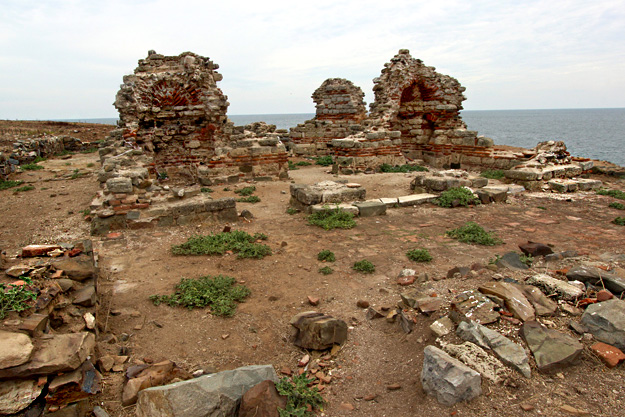
These same ruins became famous when, on July 28, 2010, researchers announced that a team of archeologists conducting excavations had discovered a small sealed alabaster casket buried beneath the altar. Nearby was a small stone box with an inscription stating that the larger box contained the mortal remains of St. John the Precursor, more commonly known as John the Baptist. On August 1st, before a crowd of camera-toting journalists, clergy, archeologists, and members of the public, the box was opened. Inside were relics that included a jaw fragment containing a tooth, a heel bone, finger phalanxes, and several other small bones.
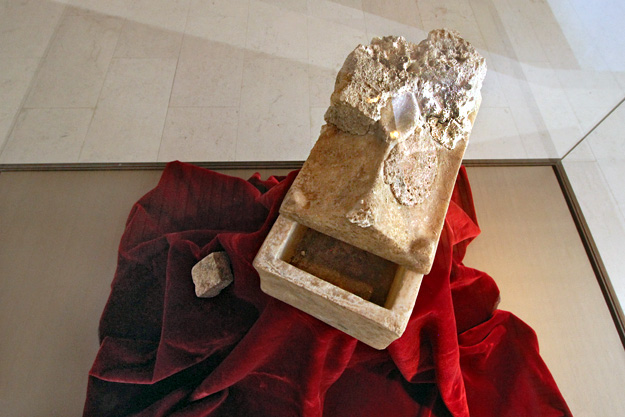
Skeptical about the relics claim, I convinced a local fisherman to take me to St. Ivan Island one day. I trekked over a hill to the tumble-down red and white brick monastery ruins. Blustery winds whipped hair into my eyes as I stood in front of the site, admiring the workmanship on what remains of the four domes that once crowned the building. Almost immediately, an eerie, icy sensation began at the top of my head, ran down my neck, and spread to the back of my arms and spine. My whole body began to tingle like a limb that had fallen asleep and was coming back to life as the blood rushed in. I shivered and tried to blame it on my imagination, but the sensation refused to go away. Only when I walked away from the ruin did it lessen, disappearing completely when I crested the hill and was headed back down to the boat.
Though it is impossible to know for certain that the bones actually were those of the Saint, National Geographic later reported that “DNA and radiocarbon testing of collagen from the knucklebone show that the remains likely belonged to a Middle Eastern man who lived in the first century A.D., which fits with the story of John the Baptist.” Three months later, I still can’t explain what I felt, but I must admit that I’ve never before experienced such strange physical sensations that came on so unexpectedly and abruptly. Something is definitely happening on that island. Today the bones are displayed in a silver and gold reliquary inside the Church of Saint George, located on the main square in the old town. Since the church had already been the repository for relics of St. Andrew and a particle of the Crucifix, it is a triple draw for pilgrims seeking to be healed or hoping for answers to prayers.
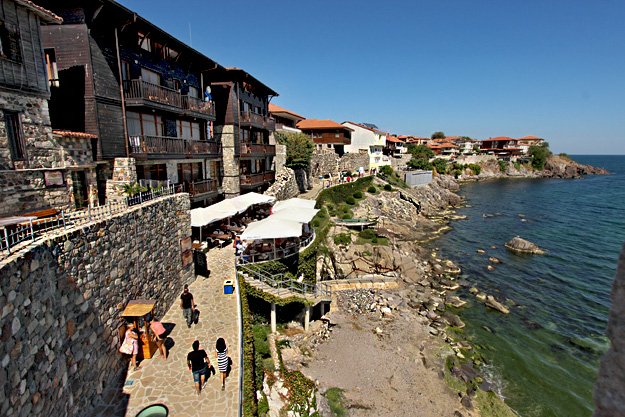
Though the main square is somewhat touristy, with its plethora of souvenir shops and sidewalk cafes, walking two blocks in any direction took me away from the hubbub. I climbed up narrow cobblestone streets bordered by 19th century wooden houses built atop high stone foundations and popped into a smaller museum on the south side of the peninsula, where old fortress walls and towers that protected the ancient trading port have been meticulously restored. Everywhere I looked, history was on display like a peacock with tail feathers spread. Beneath the old fortress walls, active excavations were still delving into the past, while 200-year old houses perched atop the historic stone works.

When I’d had my fill of history I turned to the beaches of Sozopol. In addition to a pocket beach at the tip of the old town peninsula, Sozopol offered two gorgeous bays lined with picture-postcard arcs of sand. Rows of hot pink and white sun umbrellas beckoned in the hot afternoon sun but I preferred lounging poolside at a beachfront restaurant, where I could enjoy live music, sip virgin Margaritas, and order up fresh-caught seafood for a pittance.
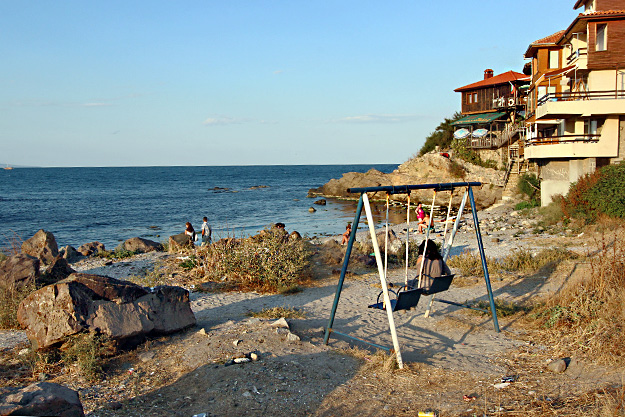

After a week I felt like a new woman but I wasn’t ready to leave. Since I travel without plans or reservations, it was easy to stay a second week and continue my Yoga and exercise regimen, but there was an additional benefit to extending my stay. The first weekend of September marks the end of the tourist season and overnight the town virtually cleared out. The weather turned refreshingly chilly, requiring a light jacket after sunset. Happy to have made it through another busy season, locals chatted over fences and began stockpiling wood for heating during the famously cold Bulgarian winters. Fishermen gathered on the wharf, mending nets by hand in preparation for the start of the fishing season. One after another, restaurants closed their doors, until only three remained open in the old town. The lack of restaurants wasn’t an issue; most nights Irena Atanasova appeared at my door with home cooked delicacies for me to sample. She hovered over me like a mother hen making sure I was well fed and comfortable.
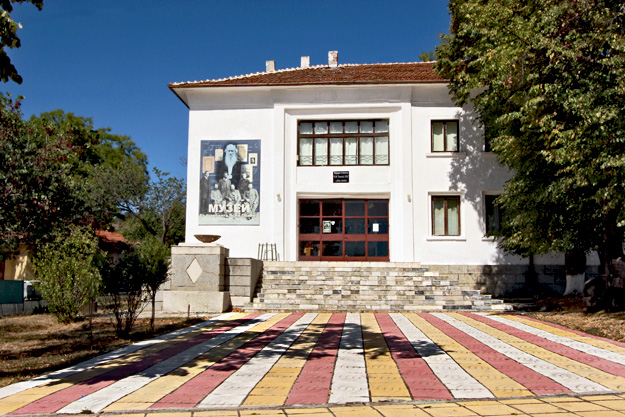
Sarah and her partner, Martin Stephenson, an accomplished watercolor artist who offers art workshops in Bulgaria, also made sure my second week was just as interesting as the first by inviting me to join them on a trip to Yasna Polyana. This tiny village located in the forested hills above the Black Sea was settled by followers of the famous Russian author Leo Tolstoy, whose life was shaped by his traumatic witnessing of an execution in Paris in 1857. In a subsequent letter to a friend he wrote, “The truth is that the State is a conspiracy designed not only to exploit, but above all to corrupt its citizens … Henceforth, I shall never serve any government anywhere.” He became an avid pacifist who turned his back on his privileged life to help those less fortunate. After completing military service, Tolstoy returned to Yasnaya Polyana, the town in Russia where he was born, where he founded thirteen schools for the children of his serfs, an experiment that is hailed as the first example of democratic education. During his remaining years, the artist chose to live a life of poverty, denial, and ascetic Christian morality based upon the Sermon on the Mount.
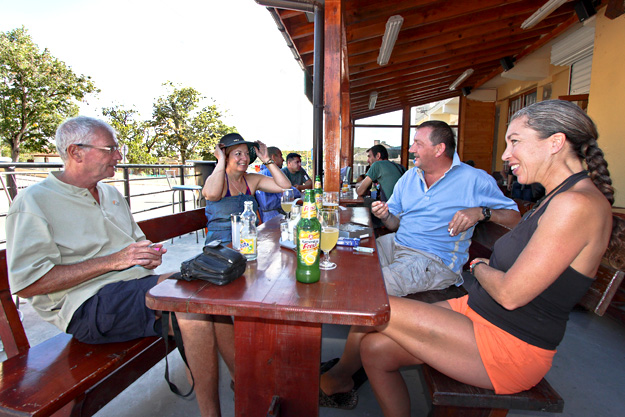
Tolstoyan communities sprang up in Africa, America, and Europe. Residents of these villages are committed to living a simple life that includes abstaining from meat, alcohol, and tobacco. They focus on the teachings of Jesus and do not support or participate in military service or a government which they consider to be immoral, violent and corrupt. When Tolstoy’s works were initially translated into Bulgarian in the 1890’s, they had a significant influence on spiritual and cultural life of Bulgaria. Intellectuals, military officers, soldiers and other followers of Tolstoy began publishing his works and corresponding with the author. In 1906 they founded the town of Alan Kayryak as a Tolstoyan community, a name which was changed to Yasna Polyana in 1934, perhaps to honor Tolstoy posthumously.
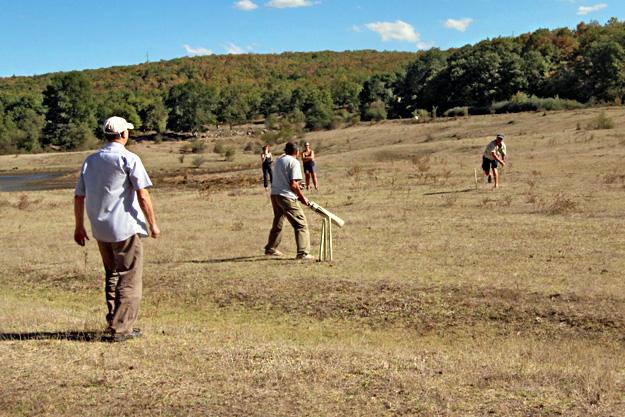
In recent years the mayor of Yasna Polyana has succeeded in opening a Leo Tolstoy museum and has even enticed descendants of Tolstoy to visit the Bulgarian town. On my final weekend I joined Sarah, Martin, and a group of Russian and UK expats who were meeting with the town mayor to discuss a future project. We met at the town Bistro for refreshments before driving to a local lake for an impassioned game of Cricket, followed by a proper English picnic, complete with wicker basket and china. Afterward, we retired to the mayor’s home, where we sat around an immense wooden table in a covered patio while he told us tales of the oppression suffered during the Communist era in Bulgaria.
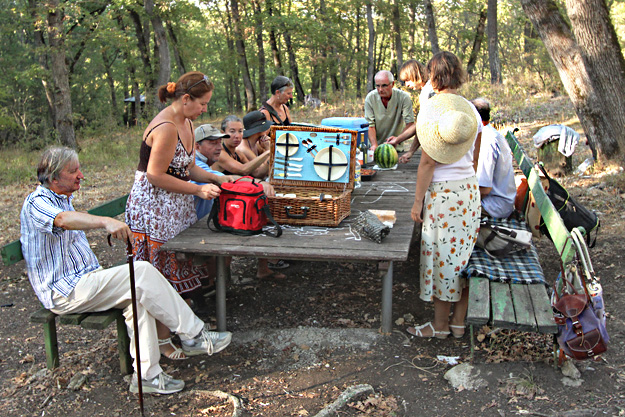
My first week was enjoyable but the second was exceptional, in that it allowed me to have a truly local experience and more thoroughly immerse in the culture. After my visit to Sofia, I knew I liked this country, but by the time my two weeks in Sozopol drew to a close Bulgaria had earned a place in my list of favorite countries. I hated to leave, but Istanbul was calling, and I knew with certainty that I would be back, someday.

Nice photos! Sozopol is filled with history. This is my favorite city at the Black Sea coast. I go there almost every summer, it’s so relaxing.
Thanks Milena. I definitely want to go back at some point. Just not enough time!
This sounds like a lovely vacation in Bulgaria. I want to go one day! Did you get any massages there ? If so where? It seems like if you do yoga that massages compliments it ! I love massages! ??
Perfect place to spend some awesome time with family. I am planning to visit it again with my family in coming few months. I hope my family will really like it as do I 🙂
I hope so too, Raja. It’s a wonderful travel destination.
Nice post i like it.
That’s what happens once one slows down 🙂 One experiences deeper and detects a lot of treasures. i’m thus glad you regained strength for any explorations. terribly attention-grabbing browse, as always! beware, Barbara!
Brabara, what I’m a bit envious about is that you’ve spent more time in Sozopol and the region than me in my whole life up till now. 🙂 While reading your post, I was thinking – how much time I spend exploring a region where I am across the world, and I don’t spend so many days in my own country – at least for exploring the way you did. I usually end up spending time on the beach/on the ski slopes/in the mountain, or spend only a few days at a spot. Maybe for me as a local is easier to get into the mood of the place where I am, but certainly I’ve never planned spending e.g. a week in one single town or region.
That’s what happens when one slows down 🙂 One experiences deeper and detects more treasures. I am so glad you regained strength for further explorations. Very interesting read, as always! Take care, Barbara!
Hi Fida! So wonderful to see you here. Yep, I’m good as new and rarin’ to go in 2014. Hope you are doing great.
Fida, that’s exactly what I thought when reading this post. My best travel memories are from places I’ve explored for more time and on my own, rather than with organized groups. You have the chance to speak with more people, to pause even for a few hours and enjoy a specific site.
Funny how you learn more about history by traveling rather than by sitting in a university class … excellent story about the ancient city of Apollonia, never heard of it before now!
James, that’s a very insightful comment, and echoes my experience exactly. I’m constantly amazed by how little I know about the history and cultures of the world as I travel, and I always leave a country with a new appreciation of how much there is to learn. Eastern Europe was especially interesting, as it’s been inhabited by scores of ethnic groups that I’ve never heard of.
I love the pictures in this blog psot!
Thanks so much Wesley! Glad you enjoyed them.I’m trying to include more photos than ever in my stories these days.
I would be more thankful to you if you share some more information about the place because i m looking forward to spend vacations with family coming this new year
Hi, I enjoyed reading your post, espeically looking at the photos! Wish i was there to see the monastery ruins on St. Ivan Island.
Hope you get to see the ruins personally some day, Trisha, but so happy to hear you enjoyed reading my story about Sozopol.
Looks like you had a great time! We’ve only been in Sofia a few days but it looks like you had much better weather then us! We’ve had nothing but fog.
Tough time of the year to be in Sofia, Dan. I imagine the winters are pretty brutal. Too bad you couldn’t have made it in the spring, summer, or fall.
What a wonderful article! I visited Sozopol a number of years ago (without the yoga) and also fell in love with the place. On my visit, my wife and I nearly bumped into the prime minister of Bulgaria. I would love to go back and thanks to your article and pictures, I just did!
Thanks so much for your comment Ellis. It is, indeed, a wonderful place, and I’m always very happy when I hear my stories bring back fond memories for my readers.
so gorgeous!
Hi Hogga: Hope you get to Bulgaria someday – it’s fantastic!
We found your write up and photographic illustrations very interesting. You have certainly captured the essence of the whole of Sozopol and not just the touristy bits. We’re glad you recouperated and enjoyed your stay here in Bulgaria – including a visit to our lovely village of Yasna Polyana.
I admire you for living your dream after years of working.
Hi Linda! So lovely to hear from a local resident in Yasna Polyana. As you may know, I loved my entire time in Bulgaria – what a wonderful country – but the Old Town of Sozopol and subsequent day trip to Yasna Polyana were my favorite places. Thanks so much for taking the time to leave me a comment.
What a superb sounding place. And I love the idea that it potentially houses St John the Baptist relics which have even passed the carbon-dating test (too few relics and subject to any scientific scrutiny).
It was a fascinating place, Mark. At first blush, it looked like a sleepy little village with not too much to do, but the longer I stayed the more I discovered. As so often happens, the locals really opened up to me after my first week. Guess they’re used to seeing people for just a few days who then disappear, but someone who stays longer piques their interest.
It looks a lovely bit of coastline for a relaxing break, but I’m wondering whether I can get a bikini body like Sarah’s in just a couple of weeks?
LOL Heather – I actually thought about adding a line to that caption that said: “Yes, I can do this pose, but my body doesn’t look like this.”
Thoroughly enjoyed reading about your respite…Sounds like fascinating off the beaten track style places although clearly some interesting tourists visit. Thanks!
Thanks Carol. I love finding and writing about these out-of-the-way places that have so much to offer.
I loved reading about your visit; now I feel like I was there too!
Linda, that’s probably the best compliment you can pay a writer. If you felt like you were there with me I’ve done my job, and that makes me very happy. Thanks so much.